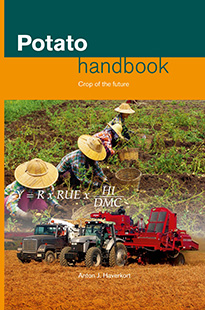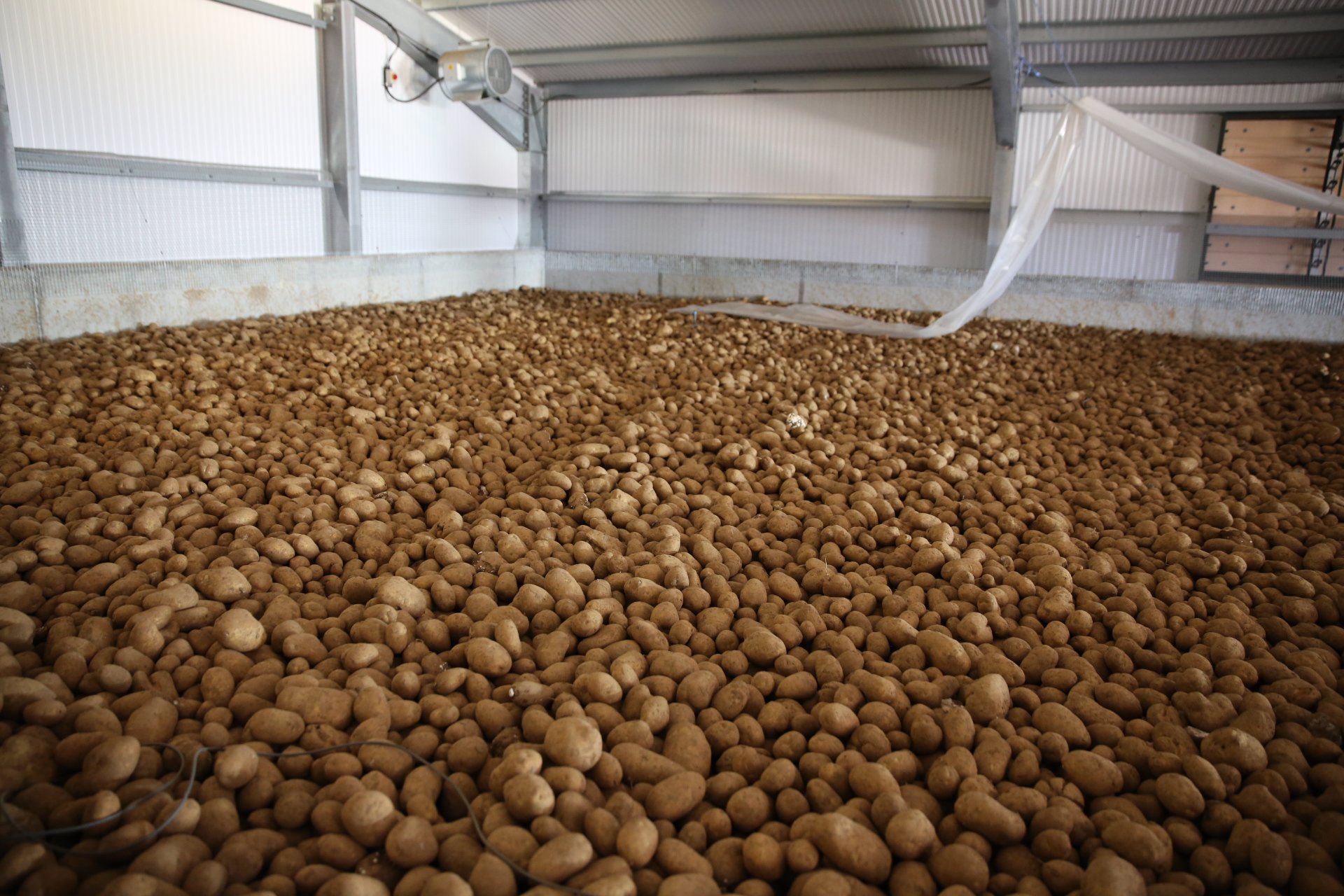Already a subscriber? Activate your premium account

Potato Handbook

During storage of potatoes, the temperature, the relative humidity and the concentration of carbon dioxide are monitored. The temperature in an analog fashion, is measured with a mercury thermometer placed inside a tube placed at a certain depth in the pile with a dial at the top for easy reading.
About every 50 t has a thermometer, one or two per compartment. Continuous and automated temperature recordings take place with a thermistor (thermal resistor), a semi-conductor of which the electric resistance depends on the temperature. Several such sensors are placed at the lower and upper end the pile, recordings are taken at regular intervals. One is placed near the wall to detect risk of frost or of heat leakage. Such records show the spatial (where in the pile) and temporal (when) courses of the temperature.
Major relevant gases
The concentrations of three major relevant gases fluctuate in a potato store, although their dynamics vary when stored in bulk, boxes or bags. These gases are water vapor (H2O), carbon dioxide (CO2) and ethylene (C2H4). Water vapor evaporates from the tuber through its lenticels and skin, carbon dioxide is a product of respiration and leaves the tubers through its lenticels. Ethylene is a plant hormone produced by ripening fruits and tubers at low concentrations where it hastens ripening. At high concentrations, ethylene keeps the tubers dormant. Different organic molecules consisting of more than one atom absorb infrared radiation (more absorption means less transmission) at different characteristic wavelengths. The infrared absorption methodology permits the continuous detection of type (pertains to a specific wavelength) and content (percentage reduction in transmission) of gaseous substances. Such substances of relevance for potato storage are water vapor, carbon dioxide and ethylene. Water vapor is measured at different places in the store at various depths of the pile. Carbon dioxide usually is only recorded in the air-duct below the pile as this gas is heavier than the other air components nitrogen (N2) and oxygen (O2). CO2 lowers down to settle at the bottom. Ethylene is a volatile component, it is not recorded routinely when not used as a sprouting inhibitor and is measured on top of the tubers in the store. Like temperature recording and interpretation, the recording of the presence of gases forms the basis of decisions about when and where to ventilate and with what kind of air (inside, outside, mixed and refrigerated or not). In comprehensive largescale stores many processes are automated. Here the sensors indicate the air source (inside outside or mix), its degree of refrigeration and its speed through the storage compartments by adjusting the fan speed, opening and closure of hatches and capacity coolers.

The transmission of infrared radiation is interrupted by gases that contain more than one type of atom. The wavelength of transmittance reduction is a typical characteristic of the gas and the degree of reduction (as %) is a measure of its concentration.
Events
©2015 - 2024 Potatoworld | Webdesign and realisation COMMPRO